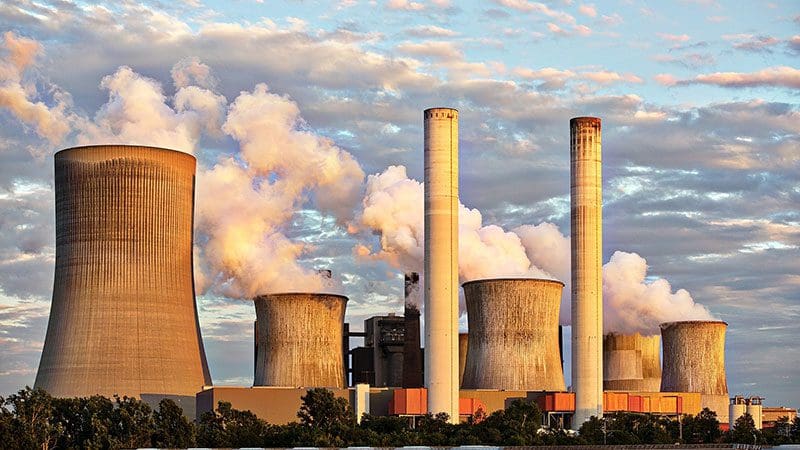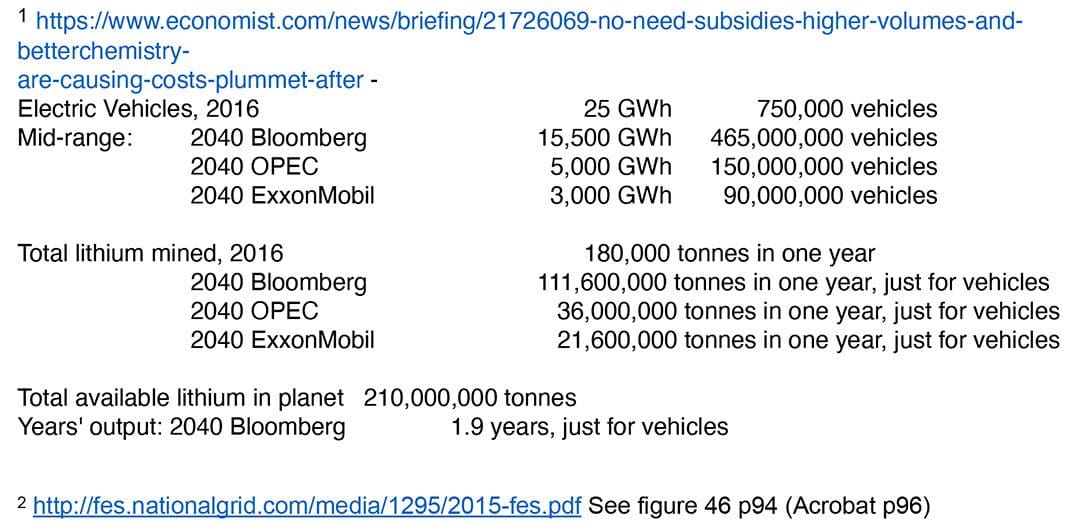Alternatives to CAES for provision of arbitrage, balancing, ancillary, stability and other services come from power stations, pumped hydro-electric stations, batteries, Demand Side Response (DSR), interconnectors and ignorance.
Power Stations
Power stations are being closed at a rapid rate, making them increasingly unable to provide these services at all. In providing these services they have high greenhouse gas emissions and substantial other pollution.
Power Stations with CCUS
Carbon Capture and Storage (CCS) and Carbon Capture and Use (CCU) (collectively, CCUS) is being proposed to make power stations emissions-free. However CCUS has a number of draw-backs, including:
- High capital and operational costs;
- Imposing a ~30% efficiency penalty on the power station;
- CO2 transportation and storage is hazardous.
CO2 is invisible, odourless and heavier than air, so any leak from CO2 pipes and other transportation would asphyxiate anyone in the area. A light wind would enable this cloud to migrate to asphyxiate population areas.
CCS carries enormous additional costs of the storage / injection installation – which remain high even if reduced somewhat by re-purposing exhausted oil and gas wells, sometimes with enhanced oil recovery “benefits” (though these involve pumping out more harmful hydrocarbons). If CO2 were to be released by an earth tremor, the same hazards as for transportation would affect shipping. CCU merely delays the emissions until the breakdown of the “usage” products; only “permanent” uses / chemical changes of the greenhouse gases are of lasting benefit.
However there will always be industrial and chemical processes that yield greenhouse gases, whose emissions need to be captured and sequestered by either storage or permanent use. Because of the costs and hazards of doing so, this is likely to lead to clusters of such industries. In those places there is scope for power stations with CCUS to piggy-back on those clusters’ infrastructure.
Batteries, Including Flow Batteries
Batteries use scarce lithium, cobalt etc. which need energy-intensive and destructive mining, refining and manufacture. There is insufficient lithium in the earth’s crust to back up the world’s electricity systems, OR to power all the world’s vehicles, even without considering usage in portable devices – and there’s even less cobalt or rare-earth metals. Cell life is 6-8 years, with their claimed optimal usage case (fast-charging and -discharging) being exactly the way to accelerate such deterioration. By time of swap-out, they require three times as much cooling as on day 1, cooling and AC-DC-AC conversion reduce battery grid-to-grid performance by 20-30% from claimed performance which is usually quoted terminal-to-terminal. And the heart of a flow battery is two pools of concentrated acid dissolving rare metal compounds.
Demand Side Response (DSR)
DSR is the best-value means of providing for short, sudden peaks and troughs in generation and/or demand. However it is necessarily limited in both volume (to a fraction of what is controllable) and duration. The volume limitation was evaluated in 2015 by National Grid as 5% of peak demand excluding DSR from future vehicle-to-grid (V2G) availability. But DSR cannot be called upon more than once in a period, so the maximum volume available needs to be divided by the number of occasions on which it may be called during the period. For example, refrigerators can be turned off for no more than 15 minutes during an evening peak; 5 “calls” during that peak mean that the total MW volume of refrigerators need to be divided by 5 to determine how much is available for any specific call.
Duration of batteries is optimally 20-60 minutes; for DSR 15-30 minutes: after sunset on a windless winter evening, how is the peak and overnight demand powered after these are exhausted by 6pm? Or if adverse weather patterns extend such periods for days or even weeks? In Western Europe, the worst-case scenario for this is a fortnight’s weather pattern called (in German) the kalte dunkel Flaute (cold dark doldrums) which settles over most of the continent for up to a fortnight, on average every couple of years; narrowing the geographical remit to a few countries and/or the timescale to few days, such patterns are frequent.
Vehicle to Grid Storage (V2G)
V2G is supposed to be the “magic bullet” that balances the grid, operating as a mix of battery storage and DSR: the charging of batteries can be displaced to low-demand and/or high-generation periods, while the energy stored in the batteries can also be called upon to support the grid. But vehicles demand about the same energy as the entire electricity grid. Electric vehicles are estimated to be about 5x more efficient at using energy, which reduces available battery capacity to 20% of grid demand. On average, EV batteries will only be half-charged; indeed, as they’ll mostly be called upon at the end of a day’s use, one can only expect them to be quarter-charged on average, reducing battery capacity to 5% of grid demand. And people won’t be happy if their batteries are flat in case they wish/need to pop out in their vehicle, so at least half that charge needs to remain, reducing effective capacity to 2.5% of grid demand. And that assumes that all vehicles will be battery powered, no hydrogen-powered fuel cells: the global shortage of lithium means that no more than one-third of vehicles will be battery powered, and these will be of smaller size and shorter range than the fuel cell vehicles, so the effective capacity is 0.5% of grid demand. No magic bullet.
Pumped Hydro
Pumped hydro is exceedingly expensive (over 3x the capital cost of adiabatic CAES), remote from both supply and demand (requiring huge transmission lines) and flood two valleys. The number of acceptable potential locations that have not yet been used is very low, especially in the developed world. And hot countries have too-high evaporation and often too little water for pumped hydro to be practical.
Interconnectors
Interconnectors are the standard fall-back position of most grids, on the rash assumption that if renewables aren’t generating “here”, they are “there”. But the sun sets on half the world at a time, stopping all solar generation overnight. Weather patterns last for hours to weeks, often affecting all neighbouring grids, so the neighbours have no surplus to export – the French and Germans cite a regular weather pattern called the kalte Dunkelflaute (Cold Dark Doldrums). Therefore interconnectors cannot be relied upon, unless reliable storage of sufficient scale is contracted with at the other end, for example Germany or Denmark contracting exclusive use of Norwegian pumped hydro – which is not itself unlimited.
Ignorance
Ignorance is the final “alternative”. This is a blithe reliance on “the markets” to ensure that sufficient energy and other services are available. It is this that powered the development of overt subsidies such as the Capacity Market in the UK (£1bn p.a. by 2017 without catalysing the construction of a single new power station) and covert subsidies such as the tremendous growth in total balancing and ancillary services in the UK (also £1bn p.a. by 2017 as compared with delivering very similar amounts of energy in 2010, without enhancing the energy supply), not to mention the hidden subsidies such as the under-pricing of pollution (carbon prices are nowhere near the $177-805/tonne (most likely $417) estimated cost of the total harm of emissions). Thus ignorance adds enormously to costs while failing to address the challenges.



